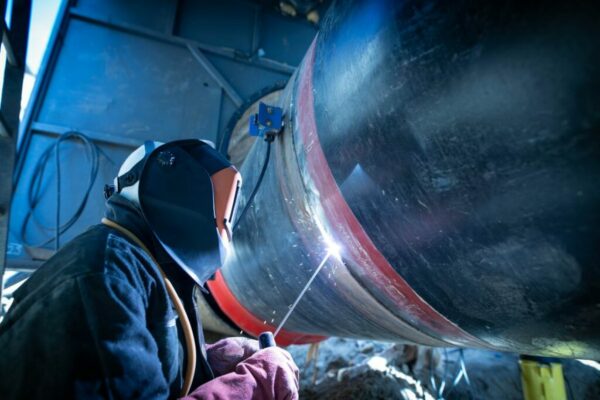The aerospace industry requires the highest levels of accuracy and quality in every aspect of its operations. From manufacturing components for aircraft and spacecraft to conducting rigorous testing procedures, maintaining the utmost standards is paramount. One critical element that plays a significant role in the aerospace sector is liquid nitrogen (LN2). In this article, we delve into how LN2 is used for precision welding and testing within the aerospace industry.
I. Precision Welding with LN2
1. Cryogenic Welding Process
LN2 is employed in a specialised welding technique known as cryogenic welding. In this process, LN2 is used to cool and freeze specific components during welding, ensuring minimal distortion and optimal structural integrity. Cryogenic welding is particularly crucial when dealing with sensitive materials like titanium and nickel-based alloys, which are common in aerospace applications.
2. Reduced Heat-Affected Zone (HAZ):
The controlled use of LN2 in cryogenic welding minimises the size of the Heat-Affected Zone (HAZ). A smaller HAZ means that there is less chance of microstructural changes and stress development in the welded area, resulting in stronger and more reliable joints. Aerospace components require precise and consistent welding to meet the stringent safety standards of the industry.
3. Prevention of Weld Defects:
LN2’s cooling effect helps prevent common welding defects such as porosity and cracking. By rapidly cooling the welded area, LN2 solidifies the molten metal quickly, reducing the chance of gas entrapment and weld porosity. This results in higher quality and more defect-free welds, critical for aerospace components’ structural integrity.
II. Testing Aerospace Materials and Components with LN2
1. Material Testing:
The aerospace industry relies on LN2 for material testing purposes. LN2’s extremely low temperature, at around -196 degrees Celsius (-321 degrees Fahrenheit), allows it to serve as a cryogenic medium for evaluating materials’ performance under extreme cold conditions. This is essential for ensuring that materials used in aerospace applications can withstand the harsh temperatures encountered in outer space.
2. Non-Destructive Testing (NDT):
Non-Destructive Testing (NDT) methods, like ultrasonic and radiographic testing, often use LN2 to create temperature differentials during inspections. LN2’s extreme cold can reveal hidden defects, cracks, or anomalies in materials and components that might not be apparent at room temperature. These NDT techniques are vital for ensuring the safety and reliability of aerospace parts.
3. Environmental Testing:
Aerospace components must endure a wide range of environmental conditions, from extreme cold to intense heat. LN2 is a valuable tool for subjecting materials and components to extreme temperature testing. By immersing them in LN2, engineers can simulate the frigid conditions of high-altitude flight or outer space, allowing them to assess how materials and components will perform under these challenging conditions.
III. Fuel Tank and Propellant Cooling
1. Rocket Propulsion Systems:
In the aerospace industry, rocket propulsion systems are commonly used for launching satellites and spacecraft into orbit. LN2 plays a vital role in these systems as a cryogenic propellant. The extremely low temperature of LN2 allows it to be used as a fuel and oxidiser, creating a powerful thrust when combined in the combustion chamber with other propellants. This makes LN2 an essential component of rocket engines.
2. Tank Insulation:
To store cryogenic fuels like liquid hydrogen and liquid oxygen, aerospace companies rely on well-insulated tanks that keep the propellants at extremely low temperatures. LN2 is used during tank testing and as a coolant during launch to maintain the propellants’ integrity. Ensuring the proper insulation and cooling of these tanks is crucial for the safe and successful launch of spacecraft.
Conclusion
Liquid nitrogen (LN2) is an indispensable tool in the aerospace industry, serving multiple critical functions. Whether it’s ensuring the structural integrity of aircraft components or powering rocket propulsion systems, LN2’s extreme cold properties contribute to the precision and safety that define aerospace operations. As technology continues to advance, the aerospace industry will undoubtedly find new and innovative uses for LN2 in pursuit of even greater precision and performance.










